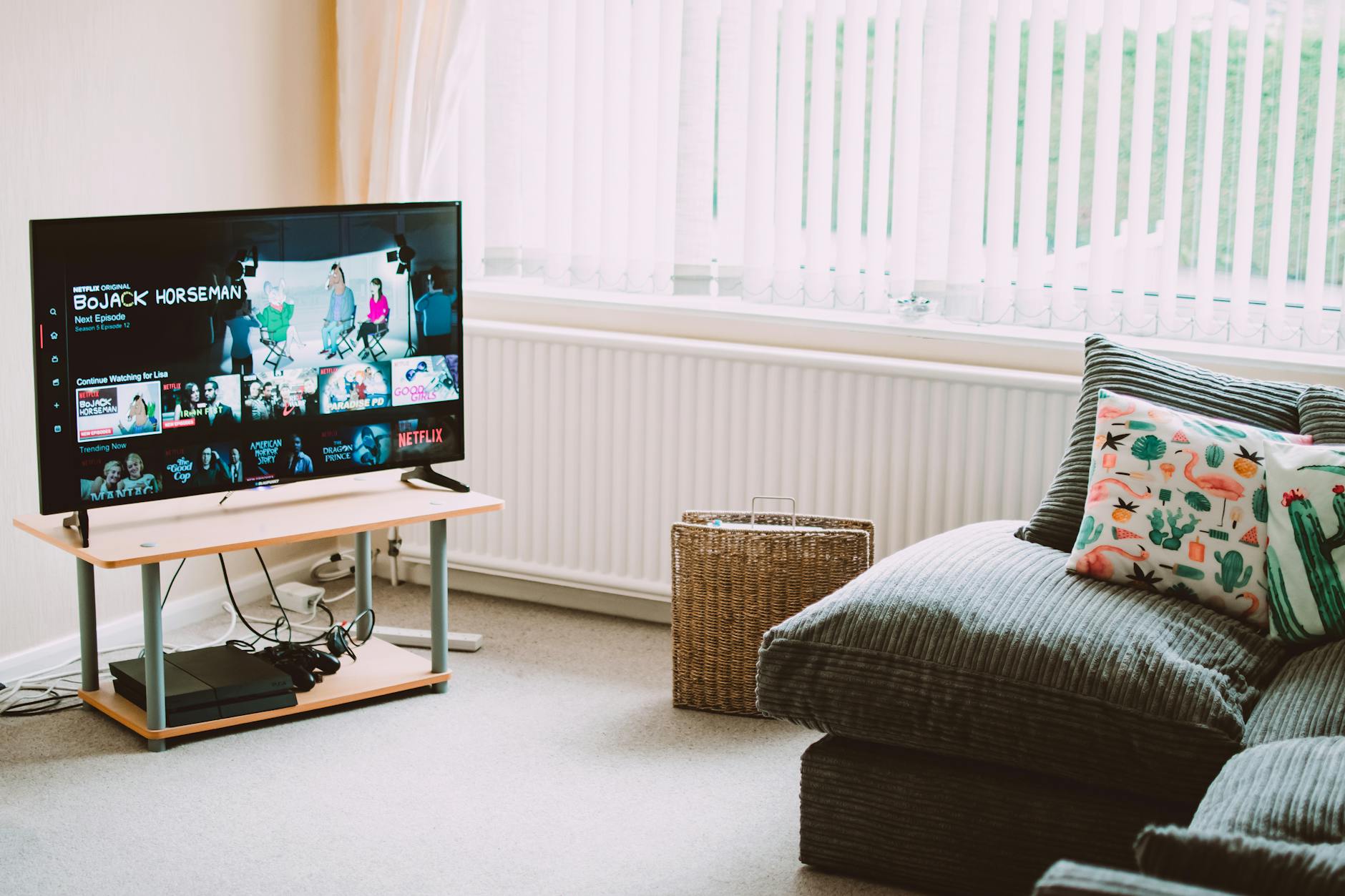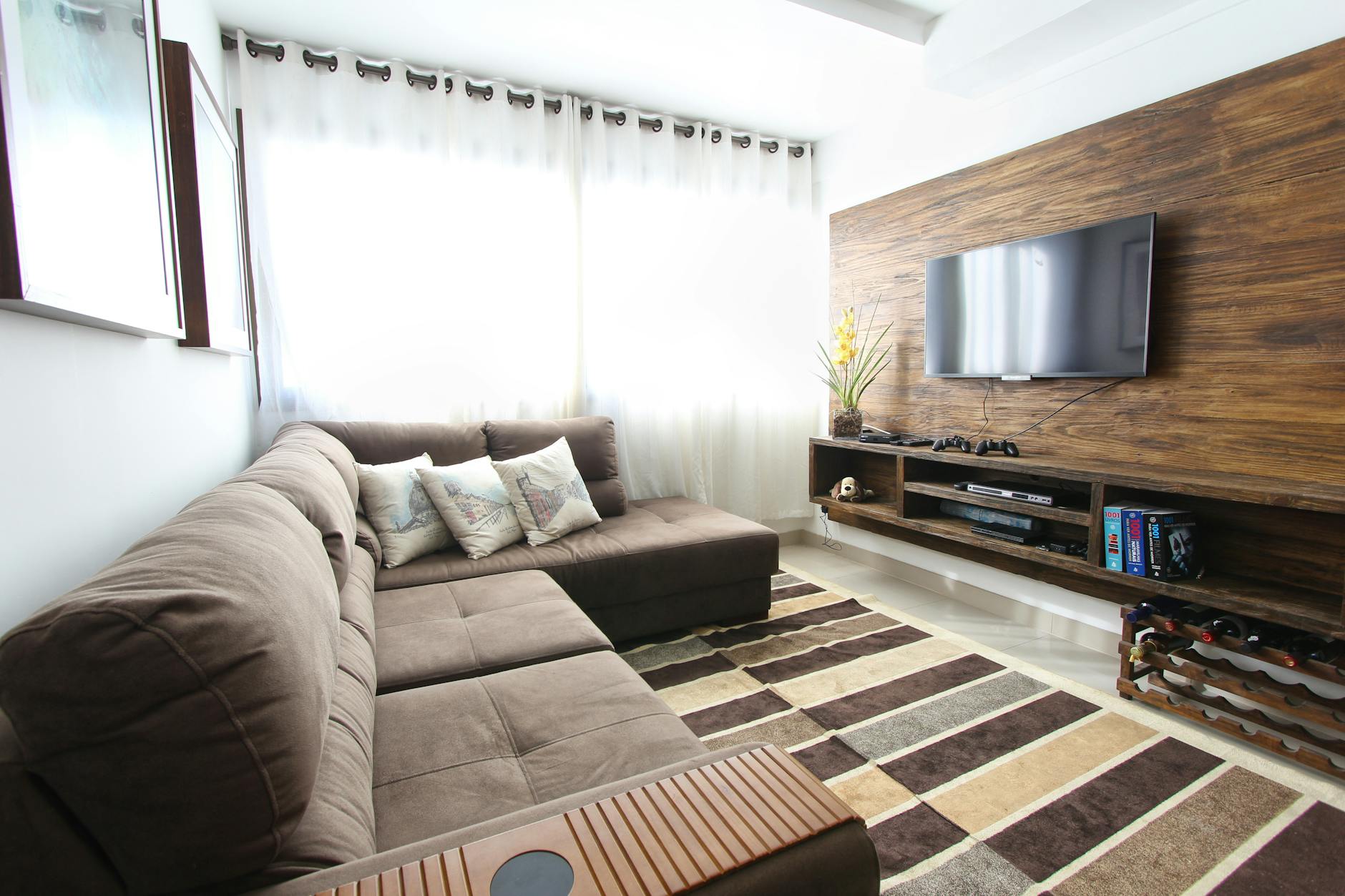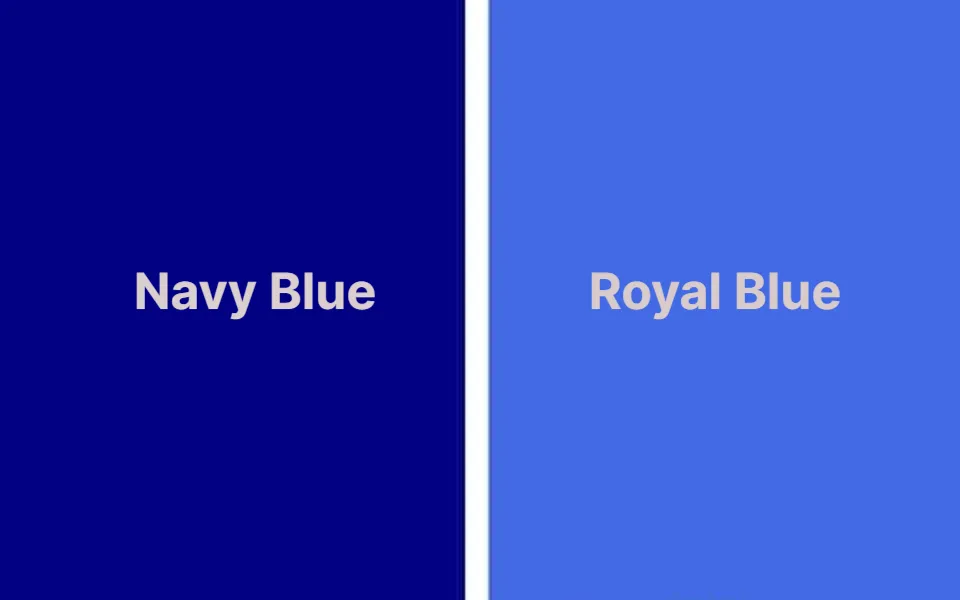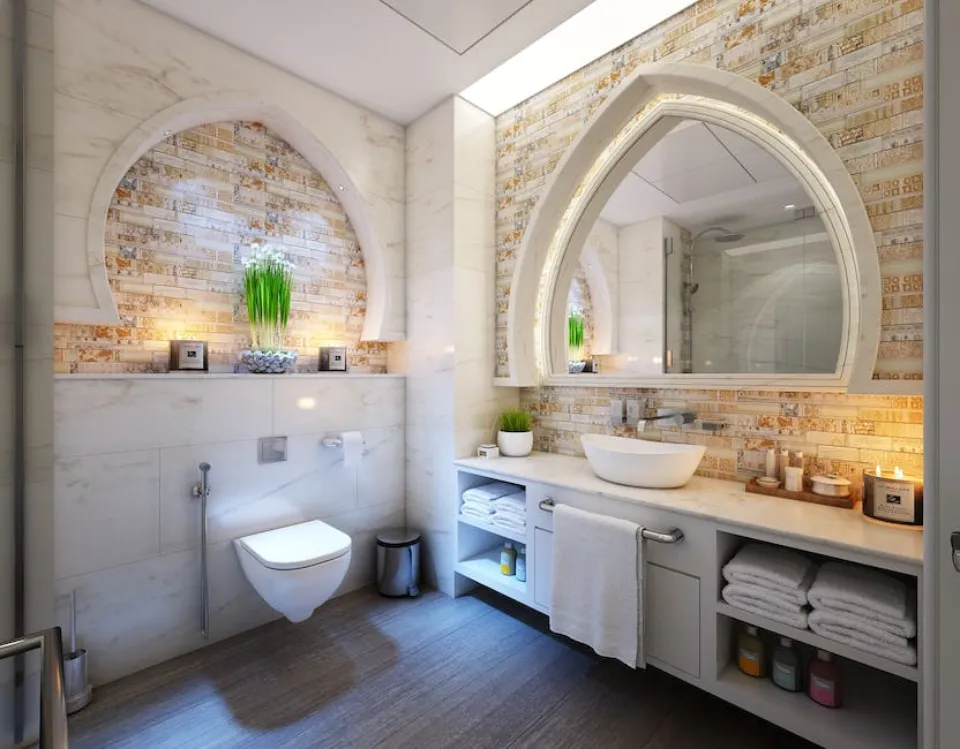The size of the room, the size of the TV, the placement of the furniture, and even the heights of your family members all affect where you should hang the TV. You can use this guide to determine how high to mount a TV in any room of the house.
The middle of your TV, while seated, is advised to be at eye level by experts. This translates to a distance of about 42 inches from the floor to the center of your TV.
You’ll discover that, as with other things, there is a general principle that can be utilized in the majority of instances, but not in all. You can go one step further and adjust the screen height to suit your needs in order to place the screen optimally.
Please read on for more detailed information.
How to Mark the Optimal Height of a TV on a Wall?
You must mark the wall with the TV mounting height once you are certain of it.
Measure up from the floor to the bottom edge of the TV screen using the standard 42-inch center height recommendation.
| Screen Class (Diagonal) | Screen Height | Distance: Floor to Bottom of Screen |
| 43-inch | 22 inches | 31 inches |
| 50-inch | 25-1/2 inches | 29 inches |
| 60-inch | 29-1/2 inches | 27 inches |
| 75-inch | 37 inches | 22 inches |
| 85-inch | 42 inches | 20 inches |
Another approach is to gauge users’ actual eye levels and align them with the center of the screen.
- From one corner of the screen to its opposing diagonal corner, run a single strip of low-stick painter’s tape.
- Tape the remaining two corners with a second strip. The screen’s center is where the two strips intersect.
- Sit a family member or friend in front of the screen who represents the height of the typical viewer.
- Install a laser level facing the wall from behind the observer. The back of the viewer’s head should be where the beam crosses, about where the viewer’s eyes would be. The viewer must always keep the beam behind them for their own safety.
- Raising or lowering the TV screen on the wall will bring the laser line and the screen’s center into alignment.

How Do You Determine the Best Height for Flat Screen TV?
Indeed, there are some variables that can aid in your estimation of the ideal TV height.
These factors are:
TV Size
It should be clear what this means. How high off the ground your TV should be depends greatly on its size.
Before you start with the mounting process, taking notes of the size of your flat-screen TV will allow you to choose an appropriate height while keeping enough room for extra space that might be required for additional add-ons.
The ideal viewing distance from your TV is also determined by the size of your TV.
This needs to be a balance between:
- You aren’t too far away from the screen that you can’t see the specifics.
- Not too close to require you to crane your neck and look around in order to see everything.
Why is the Distance of the TV Screen Important?
The immersiveness of watching TV may be diminished if you are too far away from the screen.
However, having your head too close to the mounted TV can give you headaches. Overall, the experience will be improved by being at an ideal viewing distance.
The Ideal Height for Viewing Distance
Even though eye level height should be taken into consideration, the ideal TV height largely depends on personal preference.
Viewing Distance
Last but not least, you need to consider your eye level and viewing angle.
Naturally, standing up is a bad idea if you want to estimate this angle. Instead, you should compute it from a seated position similar to how you would typically watch TV.
Get a rough idea of where you’d look if the TV were mounted on the wall while sitting in your favorite couch or chair, which is where you usually watch TV.
While there is no need for extreme accuracy in this situation, mounting it at an angle that is comfortable for your neck is obviously crucial.
General Rule for a Viewing Angle
If you’re someone that does want precision, then the Society of Motion Picture and Television Engineers (SMPTE) states that the viewing angle should be no more than 30 degrees.
While that’s the absolute extreme of it, you must know that most people don’t recline their heads more than 10 to 15 degrees when they are sitting casually.

Factors to Consider When You Mount Your TV
When deciding whether to mount a TV in your room, there are a number of things to take into account.
Some of them are more impactful than the rest, however, here is a quick go through some of the most important factors that you should consider when mounting your TV:
- Individual height would be the main consideration. With more people watching TV, this could develop into a serious issue very quickly. However, this could be avoided if different people were not given the same viewing distance.
- The TV’s tilt angle and depth will be determined by the height at which it is suspended.
- When determining the distance and height at which a TV should be mounted, TV sizes are also crucial. To see the entire screen on a larger TV, you must be further away.
- Additionally, the location in which you are mounting the TV is crucial to the process. For instance, it is very likely that you will have a relaxed couch in front of the TV if you mount it in a game room. The mounted TV will move closer or rise higher in this scenario.
- Make sure the center of the screen is at the proper height for eyes when choosing the TV’s height.
Are TV Mounts Worth It?
The best method for determining the height for TV mounting has been covered in-depth. However, some people may ask themselves: are TV mounts even worth it?
When you ask this question from experts and professional reviewers, you’ll be met with a resounding yes.
That’s because TV mounts have a ton of advantages that can greatly simplify your life.
The First Benefit
They provide enormous space savings. Your television will be simply suspended against your wall rather than being placed on a large, obtrusive table.
By doing this, you can make use of the entire area under your TV however you like.
The Second Benefit
Compared to TV tables, TV mounts are significantly less expensive. They not only conserve space, but they also help you save money.
The placement of a TV and TV table in a room with a fireplace can be challenging. Because you can mount the TV directly above your fireplace, TV mounts solve this problem.
Best TV Height in Different Types of Rooms
Which room types benefit from which TV height? The ideal TV height for your bedroom, kitchen, and living room is provided below.
Bedroom
Here’s an instance where the ideal TV height of having your eyes level with the middle of the screen wouldn’t really make sense. Similar to bedrooms, you’re much more likely to be watching TV while lying in bed. I know, it’s a terrible habit, but we all do it these days! I don’t know about you, but mounting the TV directly above you on the ceiling would keep me up at night without even thinking about the TV itself. Or if you position it at the same height as your couch, your neck will develop a permanent crick.
You want to set the TV in the bedroom higher than you normally would in the living room. I would suggest a few feet from the ceiling, but it really depends on the size of the TV and how close you plan to be to it. Installing a tilting TV wall bracket will allow you to angle the screen toward where you will be watching.

Kitchen
This is yet another instance where the height of your kitchen may not be appropriate from your lounge while you are seated for the best viewing. It’s challenging to give general advice on what the best height will be for you because kitchens differ significantly from home to home.
You must first choose your primary viewing location. From my experience, TVs in kitchens are typically installed so that you can watch TV while performing other tasks, such as cooking dinner or doing the dishes, so you will probably want to go higher with the finished TV wall mounting height. However, you might also want to watch TV while seated at a dining table. Personally, I think that it’s okay to install the TV “too high” in the situation as If you’re sitting down to dinner, I would have thought that having a TV installed at eye level might be a bit much, but whatever suits your fancy, I suppose.
Installing a tilting wall bracket or a full motion wall bracket will allow you to turn the TV around to face different viewing positions, giving you the most flexibility, and most also allow the TV screen to tilt down, if you plan on watching the TV in a few different locations around the kitchen.

Lounge
Calculate where the center of the TV would be if you were to choose the recommended height from the list above, and you’ll see that it’s really not that difficult.
To determine your TV’s center, first measure the height of the screen and then divide that value by two. As you continue to watch, gauge the height of your eye level. Usually on your sofa. The height from the floor to your eye level can be measured by having someone with a tape measure do it for you. If no one is available to assist you, you can actually accomplish this on your own quite easily. Once you have this measurement, just subtract half of the TV height to get the location of the TV’s bottom. Obviously, if you live with someone who is 7′, this will be a different height than someone who is more average height, but it’s a good general estimate.
This might be significantly less than what you were planning to install for your TV, but as I’ve already mentioned, I personally like it a little higher. I just think they look too low when stood up if mounted in the “optimum” position. This means that you might want to raise the bar a little bit, but not too much, as doing so will cause neck pain and possibly even strain.

How High to Mount TV – Conclusion
The process of mounting a new TV is exciting, but choosing where to mount it on the wall can be intimidating. Choosing the right TV is crucial because it is a large, expensive item. The viewer’s viewing height is the most important consideration when determining the mounting height. The success of this project will also depend on your choice of mounting hardware, which must be sized correctly for the weight of the TV and take into account the type of wall you’ll be mounting the TV on.
Please let us know in the comments section below if you have any additional queries.



